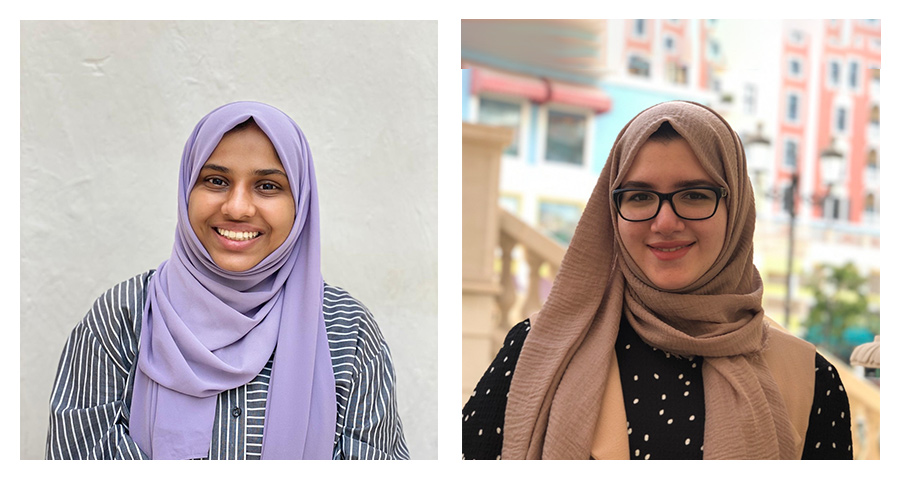
Students use research, data visualization to study structure costs of Islamic banking
Two business administration seniors at Carnegie Mellon University in Qatar (CMU-Q), a Qatar Foundation partner university, embarked on a research project last summer to learn how the structure costs of Islamic banking compare with conventional banking. Their project revealed insights into an area of finance that has been traditionally overlooked by mainstream research.
Mariam Syed became curious about the mechanics of Islamic banks during a course about financial markets: “I became interested in the friction points of Islamic banking products, to better understand how Islamic banks can weather economic downturns.
She and classmate Noora Al-Shurafa applied for a Qatar Student Initiated Research Project (QSIURP) grant from CMU-Q to investigate the question more deeply.
Al-Shurafa notes that they wanted to look at aspects of Islamic banking that are not typically researched: “Analysts tend to look at profit and risk management, but there is not a lot of research into the engineering costs of the financial instruments. We thought we could learn a lot by studying this aspect.”
Over the summer of 2020, Al-Shurafa and Syed extracted data from 63 publicly listed conventional banks, Islamic banks, and conventional banks with Islamic windows in the gulf region. They looked at two periods—2007 and 2018—and compared the structuring cost-efficiency of transacting two commonly used loan instruments in conventional and Islamic banks.
The students found that while Islamic financial instruments incur higher structuring costs than conventional instruments, over the research study time frame, they have become more cost efficient compared with conventional instruments.
As the students completed the QSIURP project and returned to classes in the fall of 2020, they found they still had avenues they would like to explore. Both students were registered in the course Modern Data Management, where students create visualization dashboards to analyze data.
Using the data from their study, the students, along with classmate Nour Mohamed, created a visual dashboard to compare the structuring and operating costs of Islamic banks and the Islamic ‘windows,’ or branches of conventional banks that offer Sharia-compliant products. These dashboards showed that the efficiency in conventional banks carried over to their Islamic finance windows, with Islamic financial instruments in Islamic windows being much more cost-efficient than in Islamic banks.
Fuad Farooqi, area head of business administration and an associate teaching professor of finance at CMU-Q, served as the students’ advisor on the project. “I am so pleased to see how the students took their research data and further analyzed using data visualization. There is a high demand for decision making analytics in the business sector, and data visualization is an important tool to analyze large amounts of data, spot trends, communicate the analysis, and present actionable recommendations.”
The students will present their findings at the virtual Meeting of the Minds in the coming weeks. Meeting of the Minds is CMU-Q’s research symposium where students showcase their projects to a general audience.
